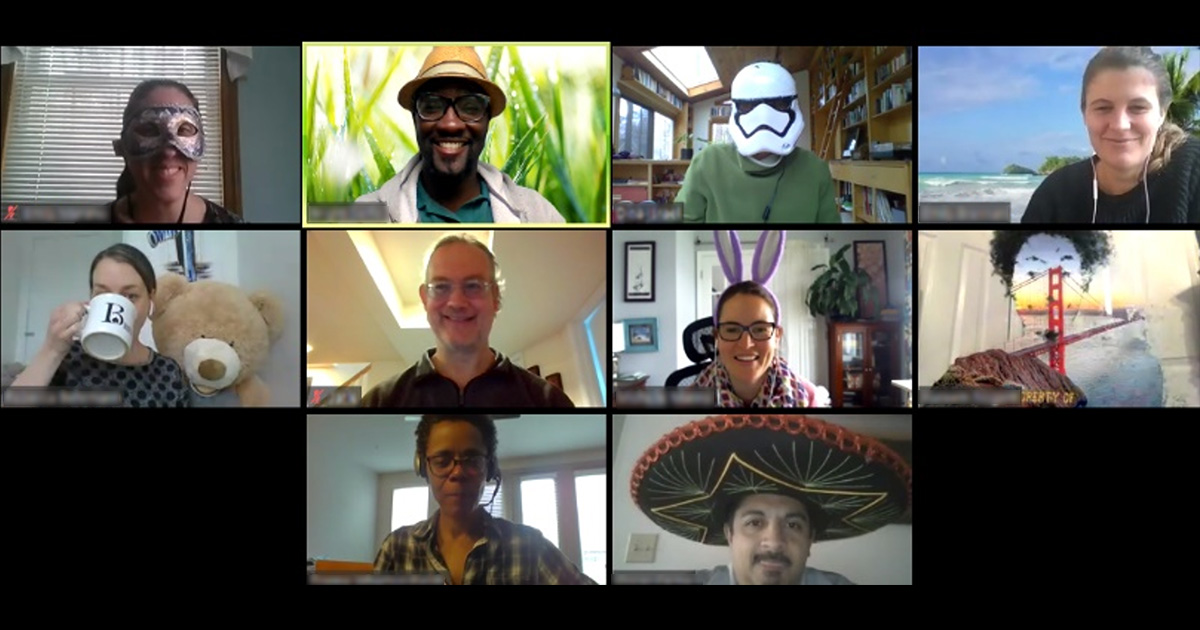Break the Ice, Build Connections

Building connections among staff members can feel especially challenging in a time when remote work and video conference calls make up most of our working day. Icebreaker activities are fun, useful tools that managers, supervisors, training facilitators, and coaches can use to enliven meetings and strengthen team and group bonds:
- Start meetings and training sessions on a positive note—particularly when participants face difficult circumstances, or topics are complex or potentially conflictual.
- Warm up a group for interactive discussions, to get thoughts and conversation flowing.
- Help build ties between participants, reinforcing the foundation of teamwork and group cohesion.
This post highlights some of the icebreaker activities that we see programs using in creative ways, and that MDRC’s technical assistance teams use in our work with program staff. We view icebreakers as a best practice when developing meeting agendas, and generally use them at the start of a meeting. They can also be useful team-building activities during break times at longer training or work sessions—for example to break up a late afternoon discussion when energy often starts to flag. Programs can also use icebreakers as part of their service delivery with participants. Per Scholas, a program that offers technology training to unemployed and underemployed individuals around the country, uses a “Name Game” icebreaker in its broader team-building strategy at kick-off meetings with each new cohort of students.
The Name Game
- The first person introduces himself and shares a fun fact.
- Then the next person repeats his name and fun fact, then introduces herself with her own fun fact.
- The third person repeats the first two names and fun facts, then introduces herself. And so on.
- The last person gets an enormous round of applause for remembering everyone’s names and their fun facts!
Most activities listed here can be completed in 10 to 20 minutes, depending on the size of your group. To help choose activities that best suit your time constraints, activities are divided into two categories:
- Icebreakers When You Have 10 Minutes or Less (Table 1)
- Icebreakers When You Have a Bit More Time (Table 2)
Tip: Fun facts gathered during icebreakers can be featured in internal staff newsletters, weekly email blasts, or office bulletin boards—for example, you can list people’s favorite book titles, TV shows, or songs on staff playlists.
Table 1. Icebreakers When You Have 10 Minutes or Less
| Activity | Instructions | Tips |
|---|---|---|
| Come as You Are (or as You’d Like to Be!) |
|
|
|
Three Words About My Neighbor |
|
|
|
Fast Facts |
|
|
| What Makes You Giggle? |
|
|
|
In Six Words |
|
|
| Three Questions |
|
|
| Rock-Paper-Scissors |
|
|
Table 2. Icebreakers When You Have More Time
| Activity | Instructions | Tips |
|---|---|---|
| Stand Up Sit Down |
|
|
| Theatre in the Round |
|
|
| Let’s Act! (Charades) |
|
|
| Write Me a Story… |
|
|
| Reflect on Your Role | Facilitator asks staff to do the following:
|
|






